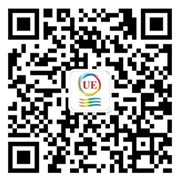-
Cell Cycle Assay Kit Plus
Product overview:
Contents:
|
Component |
20T |
50T |
|
A. Binding buffer (10×) |
4 mL |
10 mL |
|
B. RedNucleus I Staining Solution |
80 μL |
200 μL |
Storage
Store at 4°C. Expiration
date marked on the outer packing. For
long-term storage, please store at -20°C. RedNucleus I should be protected from light.
Description
The upgraded version of the cell cycle
detection kit can be used for live and fixed cell cycle assays with certain
applicability. The cell types currently validated by our company are Hela,
Molt-4, Jurkat, and K562. For Hela and Molt-4, both live cells and 75% ice
ethanol overnight fixation at 20°C could be detected, but for the other two
types of Jurkat and K562, both live and fixed states could not be detected.
Therefore, the suitability of the assay for different cell types needs to be
determined after testing.
The upgraded version of the cell cycle detection kit uses RedNucleus Ⅰ staining method to detect the cell cycle. RedNucleus I is a far-infrared nucleic acid dye with cell membrane permeability, which can quickly enter living cells, specifically bind DNA and detect the cycle of live cells without RNase digestion. Compared with the traditional propidium iodide staining method, the cells do not need membrane rupture or fixation, and the operation is simpler.
RedNucleus I is a fluorescent dye of double stranded DNA. The fluorescence intensity after binding with double stranded DNA, and is directly proportional to the content of double stranded DNA. The intracellular DNA content can be measured by flow cytometry, and then the cell cycle can be analyzed according to the distribution of DNA content. After RedNucleus I staining, assuming that the fluorescence intensity of G0 / G1 phase cells is 1, the theoretical value of fluorescence intensity of G2 / M phase cells containing double genomic DNA is 2, and the fluorescence intensity of S phase cells undergoing DNA replication is between 1-2. In addition, RedNucleus I is compatible with dyes such as Horizon BV/BUV, FITC and R-PE, and can be tested periodically after sample dyeing.
This kit is usually used for cell cycle detection of cultured adherent or suspended cells. If it is used for cell cycle detection of tissue, the tissue must be digested into a single-cell state first.
Notes
1. Before use, please centrifuge the product to the bottom of the tube briefly, and then perform subsequent experiments.
2. This product is suitable for live cell and fixed cell cycle detection, which has certain limitations. For different types of cells, whether it is suitable or not needs to be determined after testing. For fixation, it is recommended to use ice bath to pre-cool 75-80% ethanol at -20°C overnight to fix cells.
3. There are quenching problems with fluorescent dyes. Please avoid light to slow down the fluorescence quenching.
4. For your safety and health, please wear lab coats and disposable gloves.
The upgraded version of the cell cycle detection kit uses RedNucleus Ⅰ staining method to detect the cell cycle. RedNucleus I is a far-infrared nucleic acid dye with cell membrane permeability, which can quickly enter living cells, specifically bind DNA and detect the cycle of live cells without RNase digestion. Compared with the traditional propidium iodide staining method, the cells do not need membrane rupture or fixation, and the operation is simpler.
RedNucleus I is a fluorescent dye of double stranded DNA. The fluorescence intensity after binding with double stranded DNA, and is directly proportional to the content of double stranded DNA. The intracellular DNA content can be measured by flow cytometry, and then the cell cycle can be analyzed according to the distribution of DNA content. After RedNucleus I staining, assuming that the fluorescence intensity of G0 / G1 phase cells is 1, the theoretical value of fluorescence intensity of G2 / M phase cells containing double genomic DNA is 2, and the fluorescence intensity of S phase cells undergoing DNA replication is between 1-2. In addition, RedNucleus I is compatible with dyes such as Horizon BV/BUV, FITC and R-PE, and can be tested periodically after sample dyeing.
This kit is usually used for cell cycle detection of cultured adherent or suspended cells. If it is used for cell cycle detection of tissue, the tissue must be digested into a single-cell state first.
Notes
1. Before use, please centrifuge the product to the bottom of the tube briefly, and then perform subsequent experiments.
2. This product is suitable for live cell and fixed cell cycle detection, which has certain limitations. For different types of cells, whether it is suitable or not needs to be determined after testing. For fixation, it is recommended to use ice bath to pre-cool 75-80% ethanol at -20°C overnight to fix cells.
3. There are quenching problems with fluorescent dyes. Please avoid light to slow down the fluorescence quenching.
4. For your safety and health, please wear lab coats and disposable gloves.


 WeChat service number
WeChat service number